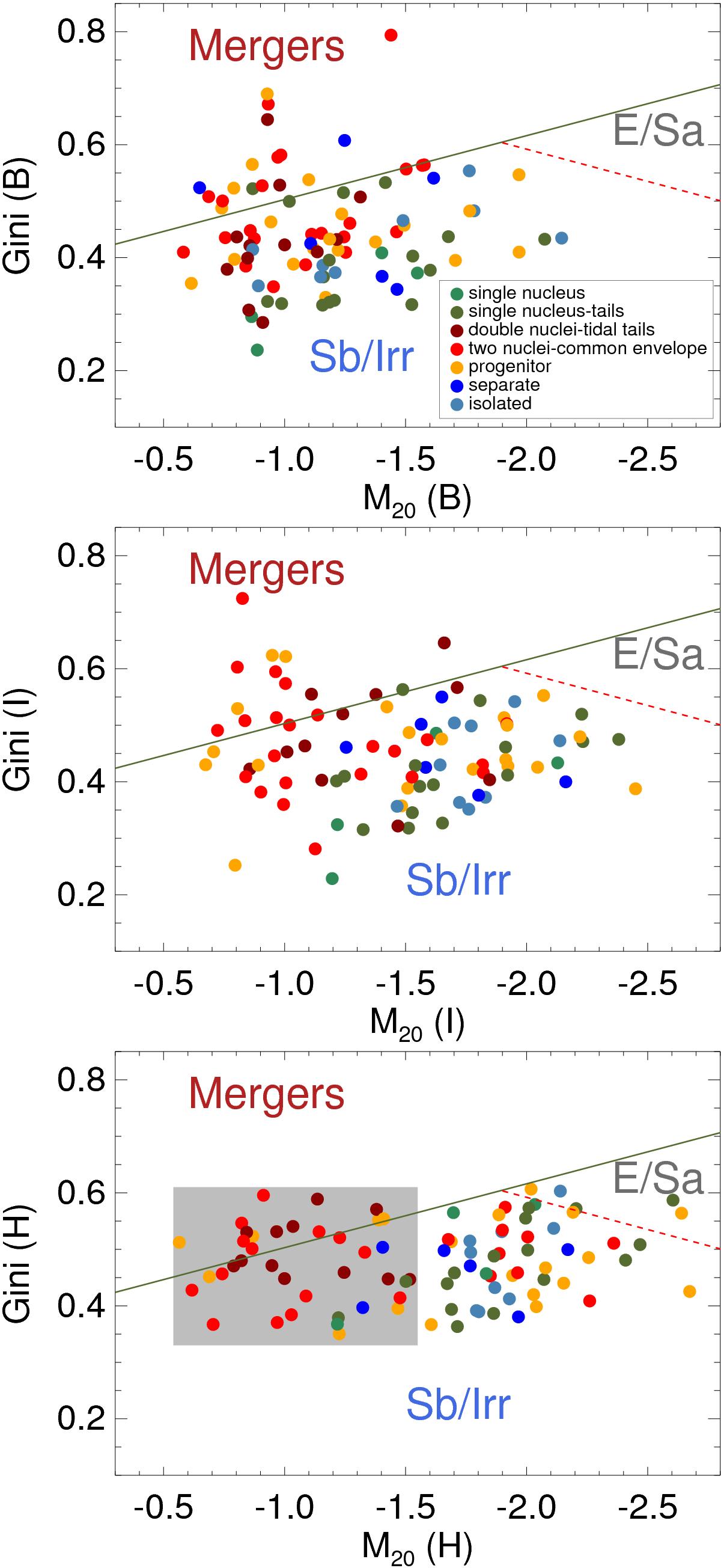Fig. 3

Gini-M20 space in B (top), I (middle) and H band (bottom). Colored filled circles indicate the different morphological classification of LIRGs following H11, where isolated galaxies, separate galaxies (symmetric disks and no tidal tails), progenitor galaxies that are distinguishable with asymmetric disks or amorphous and/or tidal tails, two nuclei in a common envelope, double nuclei plus tidal tail, single or obscured nucleus with long prominent tails, and single or obscured nucleus with disturbed central morphology and short faint tails, respectively. Following Lotz et al. (2004), the upper green solid line separates merger candidates from normal Hubble types while the lower red dotted line divides normal early-types (E/Sa) from late-types (Sb/Irr). The grey rectangle in the H band is the region where ongoing mergers live, regardless of the band. We argue that in the H band, this region can be used to better identify ongoing mergers.
Current usage metrics show cumulative count of Article Views (full-text article views including HTML views, PDF and ePub downloads, according to the available data) and Abstracts Views on Vision4Press platform.
Data correspond to usage on the plateform after 2015. The current usage metrics is available 48-96 hours after online publication and is updated daily on week days.
Initial download of the metrics may take a while.





